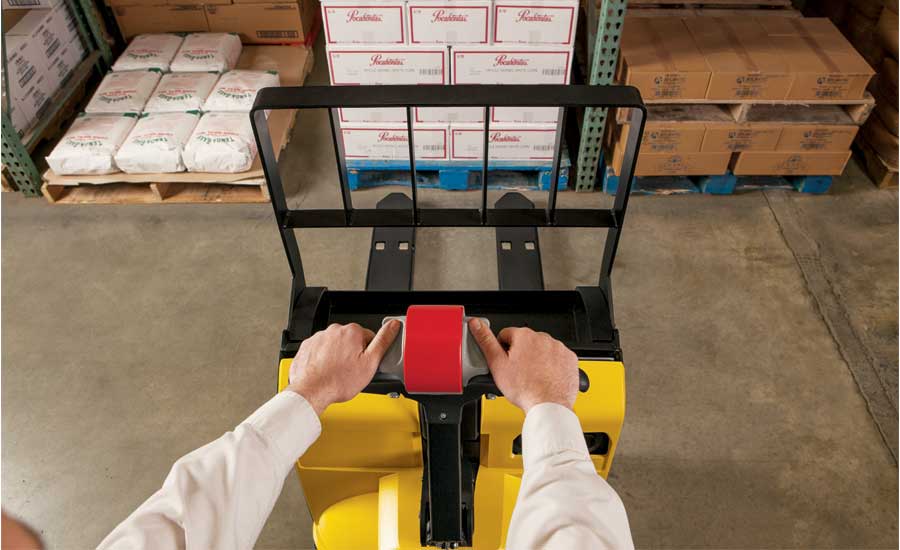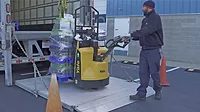Distribution
Carts, hand trucks address challenges of beverage delivery
Delivery equipment prioritize ergonomics, durability

Having recently wrapped up its 36th season, MTV’s reality competition show “The Challenge” has made a name for itself with that unique obstacles producers have crafted for daily challenges, elimination showdowns and the final challenge. Although beverage delivery personnel might not find themselves scaling mountains, solving puzzles or eating esoteric cuisines, these frontline workers are navigating their own “challenges” in today’s delivery market.
“Direct-store-delivery is a labor-intensive delivery format, with associated labor, ergonomics, safety and efficiency challenges are top-of-mind for beverage distributors,” says Mark Koffarnus, director of major accounts at Yale Materials Handling Corp., Greenville, N.C. “On the ground, delivery personnel must navigate a variety of environments and terrain, from distribution facilities and uneven parking lots to congested convenience stores and receiving docs at retailers.
“They face a landscape that can resemble an obstacle course almost every shift, with narrow lift gates, uneven terrain, congested store entrances, storerooms, coolers and more,” he continues. “Delivery personnel also face longer routes, with more stops as retailers get more frequent, smaller-quantity deliveries to satisfy consumer demand for greater product selections.”

(Image courtesy of Yale Materials Handling Corp.)
Paul Adler, director of marketing for Magline Inc., Standish, Mich., also pinpoints the importance of ensuring employee safety and well-being.
“It is important that drivers can do their job in the time they are given without risking injury,” he says. “Injured personnel can be costly to a company and create challenges finding replacements given driver shortages many industries are facing.”
Adler adds that the proliferation of water-based drinks and craft beverages has added another layer of complexity to the beverage delivery market.
Although these challenges complicate beverage delivery, suppliers are ensuring that carts and hand trucks will reduce some of those hurdles.
“Carts and hand trucks can assist drivers with moving more SKUs by offering lightweight, quality-built products and delivery systems to increase productivity,” Adler explains. “In addition to competitive compensation, drivers must have user-friendly tools (equipment) to make their jobs as easy and rewarding as they can be.”
Yale’s Koffarnus details how original equipment manufacturers (OEMs) are employing ergonomic designs to support beverage delivery operations.
“With beverage delivery personnel facing such challenges described above, maneuverability, stability and battery life are important qualities for pallet trucks,” he says. “For example, an ergonomic handle design allows for easier maneuverability in stores and on lift gates by allowing the operator to stand beside the truck with one-hand throttle activation and full visibility of the truck from end to end. Other features like a load retention strap can also help with stability when moving loads over rough terrain like poorly paved parking lots.
“Delivery personnel are also facing longer routes with more stops as retailers look for more frequent, smaller-quantity deliveries, lithium-ion battery power can offer longer runtimes and opportunity charging to help power through longer delivery routes,” he continues. “Compared to lead-acid alternatives, lithium-ion batteries can be charged in the trailer between deliveries; no need to head back to base for a battery replacement.”
For the ergonomics of carts, Magline’s Adler explains that being lightweight and having flexibility to fit the end user is a must-have when designing carts.
“No different than a bicycle, a hand truck should fit the user and the conditions it is being used in,” he says.
Designed for the long haul
Given the bumps and dings that can accompany beverage delivery, OEMs know the importance of designing equipment that can handle the rough and tumble environment.
“Material handling equipment is an investment. The products should be designed to last while taking the abuse they are given,” Adler says. “The products should be easy to repair if repairs are needed or if options need to be changed ― requiring only simple hand tools. No welding or industrial grade tools required.”
Yale’s Koffarnus explains that durable equipment can support operations by delivering longer service intervals and decreased maintenance needs.
“While out for delivery, drivers need equipment they can count on that does not require frequent maintenance,” Koffarnus says. “Accordingly, equipment is designed for durability and to reduce necessary maintenance. For example, an AC traction motor is maintenance free, and larger turntable steer bearings do not require maintenance either, unlike smaller taper bearings. You can even see an important part of protecting key components and extending service life ― the drive unit cover. The Yale MPB-VG uses a highly durable, engineered thermoplastic elastomer, which is flexible, resistant to chipping, not susceptible to rust and gives full protection of components.
“The Yale end rider embraces this dynamic, with an emphasis on quality and convenient service,” he continues. “Impenetrable materials such as the closed cell rubber and engineered composites reduce vapor transmission making touch points less likely to absorb water or bacteria. Wash-down packages are available to protect equipment with the durability of galvanized steel designed especially for corrosive environments and frequent wash downs.”
As beverage delivery navigates the new complexities of the market, experts forecast good things await the next generation of equipment.
“Technology and advancements in design and manufacturing will have a positive impact within this industry,” Magline’s Adler says. “Stay tuned.”
Looking for a reprint of this article?
From high-res PDFs to custom plaques, order your copy today!






